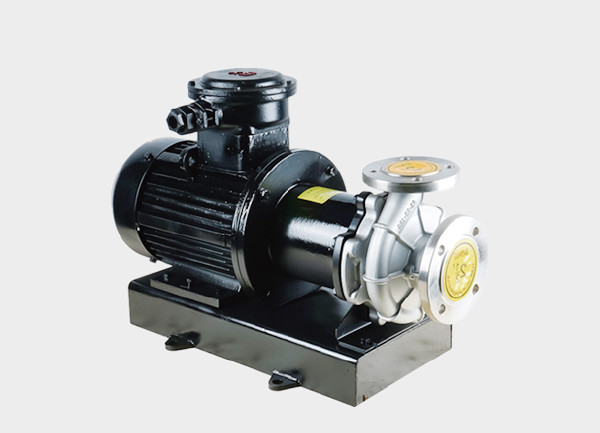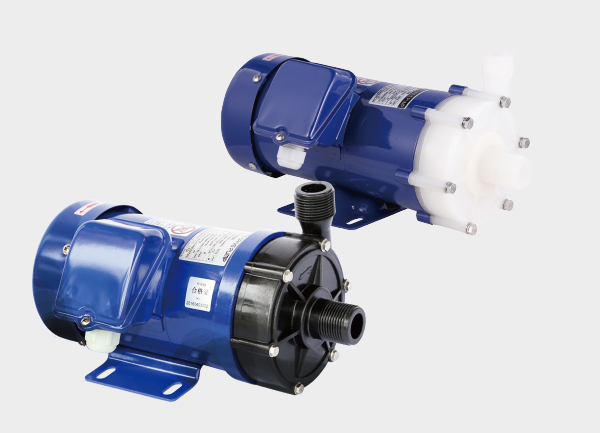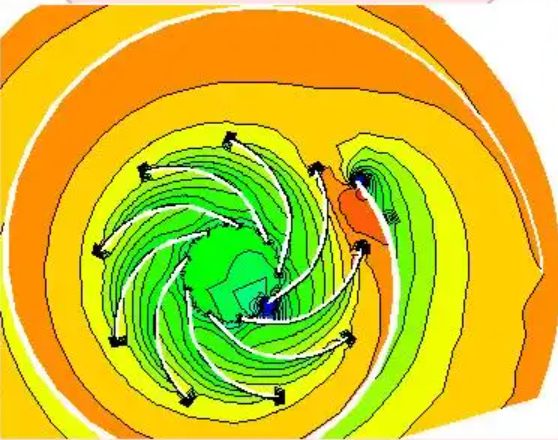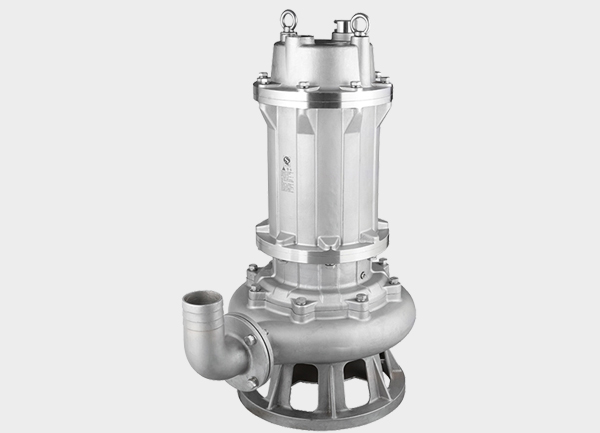In the field of industrial fluid transportation, leakage has always been a key problem plaguing enterprises – whether it is corrosive liquids, flammable and explosive media, or toxic and harmful substances, once leakage occurs, it not only causes material loss but may also lead to serious consequences such as safety accidents and environmental pollution. The emergence of magnetic drive pumps (referred to as “magnetic pumps”) has completely changed the traditional sealing method of centrifugal pumps that relies on mechanical seals, with core advantages of no leakage, high safety, and low maintenance, becoming the “safety guard” of the chemical, pharmaceutical, and environmental protection industries.
Working Principle of Magnetic Drive Pumps: Breaking through the Traditional “Magnetic Coupling” Technology
To understand the innovation of magnetic pumps, it is first necessary to compare the structural defects of traditional centrifugal pumps.
Traditional centrifugal pumps use mechanical seals or packing seals to achieve the sealing of moving and stationary parts between the motor shaft and the pump shaft when the motor drives the impeller to rotate,but the seals are prone to aging in long-term operation which leads to medium leakage, especially when transporting high-viscosity and strongly corrosive media.
Magnetic pumps, however, abandon this “contact seal” approach and adopt permanent magnetic magnetic coupling transmission technology. Its core working principle can be summarized as “three-part linkage“:
- Motor drive end: The motor drives the external “outer magnetic rotor” to rotate, which is equipped with high-performance permanent magnets (such as neodymium iron boron magnets), generating an alternating magnetic field when rotating;
- Isolation sleeve isolation: Between the outer magnetic rotor and the internal “inner magnetic rotor”, there is a non-magnetic “isolation sleeve” (usually made of stainless steel, titanium alloy, or engineering plastics), completely isolating the “power side” (outer magnetic rotor) of the pump from the “medium side” (inner magnetic rotor, impeller), forming an absolutely sealed cavity;
- Magnetic torque transmission: The magnetic field of the outer magnetic rotor passes through the isolation sleeve, generating a “magnetic torque” on the inner magnetic rotor with built-in permanent magnets, driving the inner magnetic rotor and impeller to rotate synchronously, ultimately achieving the suction and discharge of the fluid.
Throughout the process, there is no direct contact between moving and stationary parts. The isolation sleeve becomes the “first and only line of defense” against medium leakage.
Core Advantages of Magnetic Drive Pumps: Safety, Efficiency, and Low Maintenance
Compared with traditional centrifugal pumps, the advantages of magnetic pumps are concentrated in the two dimensions of “no leakage” and “long life”, which can be specifically divided into the following four points:
- Absolutely no leakage, high safety: The isolation sleeve completely isolates the medium from the outside, even when transporting strong acids, strong bases, toxic, flammable, explosive, or volatile media, it can avoid leakage-induced safety accidents (such as poisoning, fire) and environmental pollution, meeting the requirements of modern industrial “intrinsic safety”;
- Simplified structure, low maintenance cost: No mechanical seals or packing seals are needed, reducing the wear and replacement frequency of seals – traditional pumps require seal replacement every 3-6 months on average, while the maintenance cycle of magnetic pumps can be extended to 1-2 years, significantly reducing downtime for maintenance and costs;
- Smooth operation, low noise: Magnetic coupling transmission has no mechanical contact, avoiding the vibration and noise caused by shaft sleeve wear and seal friction in traditional pumps. The operating noise is usually below 65 decibels, improving the working environment in the workshop;
- Strong adaptability, wide application range: By selecting different materials for the flow parts (such as fluoroplastics, stainless steel, titanium alloy), it can be adapted to different properties of media – from ordinary clear water to strongly corrosive hydrochloric acid, sulfuric acid, to high-viscosity oils and slurries, it can stably transport them.
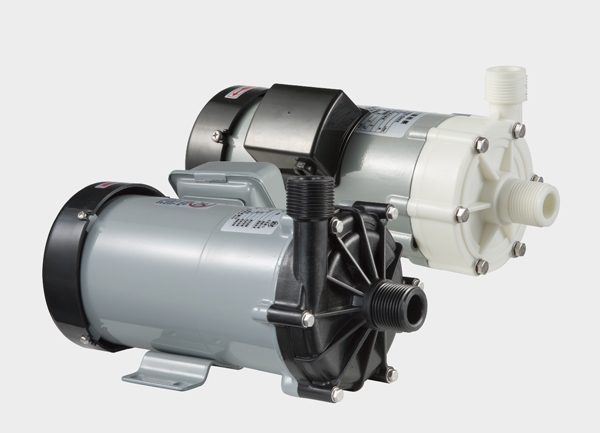
Key Structures and Selection Points of Magnetic Drive Pumps
To enable magnetic pumps to perform at their best, it is necessary to first understand their core structure and master the correct selection method.
- Key Structural Components
The core components of a magnetic drive pump consist of two parts: the “power end” and the “medium end”:
– Power end: motor, outer magnetic rotor, magnetic steel protective cover (to prevent magnetic steel from being affected by external impurities);
– Medium end: inner magnetic rotor, impeller, isolation sleeve, pump body, bearing (usually a sliding bearing, lubricated by the medium);
– Key vulnerable parts: isolation sleeve (must avoid damage due to medium erosion or dry running), bearing (relying on medium lubrication, must prevent dry friction).
- Key Points for Selection
Improper selection may lead to a decrease in the efficiency of the magnetic drive pump or even damage. The following three points need to be focused on:
– Medium characteristics: clarify the viscosity of the medium (high viscosity may lead to insufficient magnetic torque, requiring the use of high-torque magnetic steel), corrosiveness (determines the material of the flow-through parts, such as using fluoroplastic pumps for strong acids and stainless steel pumps for weak corrosives), and solid content (media containing particles require the use of wear-resistant materials to avoid wearing the isolation sleeve and bearings);
– Operating parameters: determine the required flow rate (m³/h), head (m), and working temperature (high-temperature media require the use of high-temperature-resistant magnetic steel to prevent demagnetization of the magnetic steel);
– Operating conditions: avoid “dry running” (without medium, the bearings will lose lubrication and wear quickly, and the isolation sleeve may overheat and damage due to lack of medium cooling). It is necessary to install a “low liquid level protection device” or “flow switch” to ensure the pump operates with medium.
Application Scenarios and Industry Cases of Magnetic Drive Pumps
With the advantages of no leakage and high safety, magnetic drive pumps have become standard equipment in many industries.
Typical application scenarios include:
– Chemical industry: transporting strong corrosive media such as hydrochloric acid, sulfuric acid, nitric acid, and sodium hydroxide, such as acid and alkali transportation pipelines and feed pumps for reaction vessels in chemical plants;
– Pharmaceutical industry: transporting pharmaceutical intermediates and sterile liquids to avoid contamination of the medium by the outside and prevent leakage of toxic media from endangering the health of operators;
– Environmental protection industry: treating printing and dyeing wastewater, electroplating wastewater (containing heavy metal ions), and landfill leachate, etc., to prevent leakage of toxic wastewater from polluting soil and groundwater;
– Petrochemical industry: transporting flammable and explosive media such as gasoline, diesel, and methanol to avoid leakage causing fires or explosions;
– Food industry: transporting fruit juice, syrup, edible oil, etc., without impurities caused by wear of sealing parts, meeting food hygiene standards (food-grade stainless steel materials must be used).
For example, a large chemical enterprise originally used traditional mechanical seal pumps to transport concentrated hydrochloric acid. On average, it had to stop for maintenance 2-3 times a month due to seal leakage, and there was a safety hazard of hydrochloric acid leakage. After switching to fluoroplastic magnetic drive pumps, not only was there zero leakage, but the maintenance cycle was extended to 18 months, reducing annual downtime losses by over 500,000 yuan.
Development Trends of Magnetic Drive Pumps: More Efficient, More Intelligent, and More Environmentally Friendly
With the advancement of industrial automation and green manufacturing, the technological development of magnetic drive pumps shows three major trends:
- Efficiency improvement: By optimizing the arrangement of magnetic steel (such as using “Halbach array” magnetic steel) and improving the hydraulic design of the impeller, the magnetic transmission efficiency and the hydraulic efficiency of the pump are enhanced. The efficiency of some high-end magnetic drive pumps has approached that of traditional centrifugal pumps (over 90%).
- Intelligence: Integrating temperature, vibration, and flow sensors to monitor the operating status of the pump in real time – when the bearing temperature is too high or the flow is too low (indicating possible dry running), it automatically alarms and stops to prevent equipment damage.
- Environmental friendliness: Using more environmentally friendly magnetic steel materials (such as rare-earth-free magnetic steel) to reduce dependence on scarce resources.At the same time, optimizing the structure of the isolation sleeve to reduce energy loss (traditional isolation sleeves may cause energy loss due to eddy current effects, while new composite isolation sleeves can reduce losses by more than 30%).



